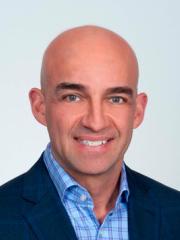#22. Clinical Use Cases for End-Tidal Oximetry
Welcome to this podcast series on end-tidal oximetry. In this third and final podcast in this series, Dr. Bilkovski will discuss areas where end-tidal O2 measurements have been used to inform clinical decision making.
Show Notes
Transcript
Speakers
Welcome to this podcast series on end-tidal oximetry. In this third and final podcast in this series, Dr. Bilkovski will discuss areas where end-tidal O2 measurements have been used to inform clinical decision making. He will pay particular attention to use during RSI, which is rapid sequence induction for intubation
Hi, I am Dr. Robert Bilkovski. Welcome to this podcast series on end-tidal oximetry. In this third and final podcast in this series, titled – Clinical Use Cases for End-Tidal Oximetry, we discuss areas where end-tidal O2 measurements have been used to inform clinical decision making. Of note, we will pay particular attention to use during RSI, which is rapid sequence induction for intubation.
To start, let´s look at the potential application during weaning trials. One approach is to use a T-piece that requires the patient to breathe through the breathing circuit. Success during a T-piece breathing trial can inform the clinician that the patient is suitable to be extubated. In a small 10-subject trial, end-tidal oximetry was used along with end-tidal CO2 to evaluate healthy volunteer response to changes in ventilation.[1] Patients were guided to perform hyperventilation through a structured approach such that measurements at baseline, 2x and 3x minute ventilation occurred. This was followed by a period of relative hypoventilation as the patient’s minute ventilation returned to baseline levels. Of note, the oxygen gradient which is the difference between FiO2 and end-tidal O2 was found to be inversely related to minute ventilation and consistent between hyperventilation and hypoventilation. A 50% decrease in minute ventilation corresponded to an approximate 50% increase in oxygen difference. More importantly, as also published by Linko et al,[2] the response in oxygen index was more quickly recognized than changes in end-tidal CO2. Lastly, only modest changes in oxygen consumption and cardiac output were observed despite the oxygen gradient changes being recognized. This data shows that the oxygen gradient correlates with changes in minute ventilation, and it changes more quickly than changes in either end-tidal CO2 or SpO2.This implies that the oxygen gradient may support the clinician to an earlier warning of impending weaning trial failure, however this requires further study.
The other clinical scenario where end-tidal oximetry has demonstrated some clinical evidence during rapid sequence induction is during intubation, known as RSI.
The first step of RSI is to preoxygenate the patient. This involves the removal of nitrogen stored within the body, termed denitrogenization), and replacement with oxygen. The basis for denitrogenization is to create a reservoir of oxygen within the pulmonary system that prevents hypoxia during the apneic phase of intubation. Common practice in the ED is to measure continuous SpO2 during RSI; use of gas analyzers remains uncommon.
In the operating room guidelines state that a patient should be pre-oxygenated until the end-tidal oxygen be greater than or equal to 85%.[3] In the emergency department, Caputo conducted a study of 100 patients to evaluate compliance with this 85% threshold that is applicable to anesthesia in the OR.[4] In fact, only 25% of the patients evaluated attained the target preoxygenation target, 27% attained end-tidal O2 between 50-69% and 11% failed to achieve a level above 50%. Desaturation as defined as SpO2 less than 90% occurred in 18% of patients and in this sub-group only 11% achieved the 85% pre-oxygenation target at induction. The authors concludes that use of end-tidal oximetry may optimize pre-oxygenation during RSI in the emergency department.
Both of these clinical use cases highlight that there is a small body of evidence that suggests end-tidal oximetry may improve care delivery during weaning trials and RSI in the emergency department. There is a need for more clinical data before definitive conclusions can be made on the relevant patient populations and limitations around use.
This concludes the third and final podcast in this series on end-tidal oxygen monitoring and be on the lookout for other podcasts. Thank you for listening.
References
[1] J. Bengtsson et al., “Effects of Hyperventilation on the Inspiratory to End-Tidal Oxygen Difference,” British Journal of Anaesthesia 73, no. 2 (August 1994): 140–44, https://doi.org/10.1093/bja/73.2.140.
[2] Linko, Kai, and Markku Paloheimo. “Monitoring of the Inspired and End-Tidal Oxygen, Carbon Dioxide, and Nitrous Oxide Concentrations: Clinical Applications during Anesthesia and Recovery.” Journal of Clinical Monitoring 5, no. 3 (July 1, 1989): 149–56. https://doi.org/10.1007/BF01627446.
[3] A. Higgs et al., “Guidelines for the Management of Tracheal Intubation in Critically Ill Adults,” British Journal of Anaesthesia 120, no. 2 (February 1, 2018): 323–52, https://doi.org/10.1016/j.bja.2017.10.021.
[4] Nicholas D. Caputo et al., “Use of End Tidal Oxygen Monitoring to Assess Preoxygenation During Rapid Sequence Intubation in the Emergency Department,” Annals of Emergency Medicine 74, no. 3 (September 2019): 410–15, https://doi.org/10.1016/j.annemergmed.2019.01.038.

Dr. Robert N. Bilkovski, MD, MBA
President, RNB Ventures Consulting Inc.
Dr. Bilkovski has broad management experience, having served in leadership roles in multiple Fortune 500 companies overseeing medical affairs and clinical development in IVD, medical device, and pharmaceuticals industries. Some of the companies where he served in leadership roles include Hospira, GE HealthCare, Abbott Laboratories, and Becton Dickinson. Robert currently is the President of RNB Ventures Consulting Inc. providing strategic consulting in the field of medical and clinical affairs for medical device and diagnostic companies.
Dr. Bilkovski received his undergraduate degree in biochemistry with a focus in genetic engineering at McMaster University in Hamilton, Ontario, Canada. Robert completed his medical training at Rosalind Franklin University/The Chicago Medical School and subsequently pursued specialization in emergency medicine. Lastly, Dr. Bilkovski earned his MBA at the University of Notre Dame as part of his transition from clinical medicine to medical industry.












